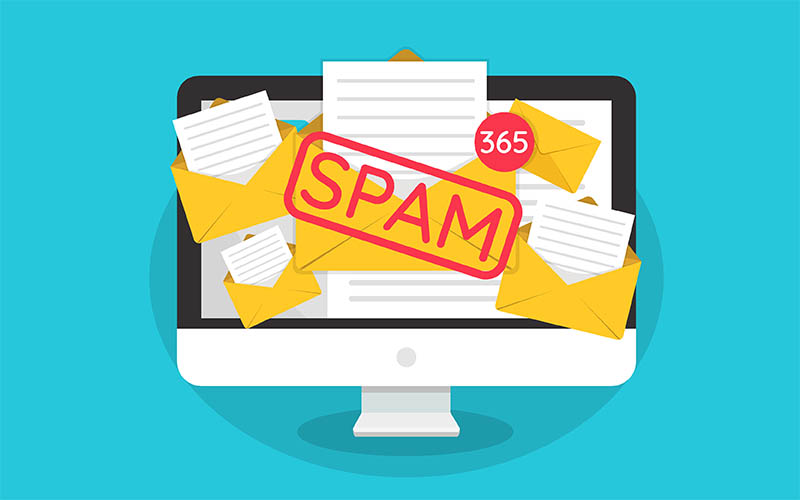Think Direct Mail is Dead? Think again… 3 reasons proving it’s alive and kicking.

Do you remember waiting patiently by your stereo to hit “record” when your favorite song was played by Casey Kasem on the Top 40 Countdown…
And rewinding cassette tapes with a number two pencil? Nostalgic memories we tell our children about while they shuffle through algorithm predicted playlists on their tiny, hand-held devices.
They’re dinosaurs – technological fossils uncovered only by fond “when I was a kid” memories shared by those of us who were alive when they walked the earth.
But then there’s denim, homemade apple pie and country music; classics that will never go out of style.
So, is direct mail a thing from days-gone-by or a classic marketing strategy that still works?
Direct mail interrupts our digital fatigue and helps consumers connect with a business on a personal level.
NUMBERS DON’T LIE
The digital age we live in leads many business owners to believe that direct mail is no longer effective at generating leads; a marketing fossil. But statistics say otherwise.
69% of people think direct mail is more personal than the Internet.
56% of consumers say print marketing is the most trustworthy.
54% say they prefer to receive updates and promotions in the mail.
39% say they have tried a new business because of direct mail.
Dental Economics reports “Even in the digital age, direct mail remains the best way to reach prospective patients in your area. It generates a 480% higher average response rate than PPC.” {source} {source}
DIRECT MAIL: 480% higher average response rate than pay-per-click!
Direct mail is a classic, solid marketing strategy that still works, in fact NOW maybe more than ever.
According to Forbes magazine, the effectiveness of a direct mail campaign is on the rise “Consumers continue to use paper coupons at a higher rate each year.” In fact, according to a recent study, 93% of people said they’ll use coupons from the mail in 2018. This is up five percentage points compared to 88% in 2017. Although consumers rely on their smartphones, there is still a pleasant “tactile experience” from touching and using physical coupons. {source}
WE ARE PROGRAMMED TO RECEIVE

We are physically wired to respond differently to the tangibility of direct mail versus digital advertising. Neuromarketing experts from the Center for Neural Decision Making at Temple University’s Fox School of business conducted a study in conjunction with the U.S. Postal service analyzing how the brain responds to physical and digital marketing stimuli.
They found that:
- Participants processed digital ad content more quickly.
- They spent more time with physical ads.
- Physical ads triggered activity in a part of the brain that corresponds with value and desirability.
- Participants had a stronger emotional response to physical ads and remembered them better.
Another study by the Canada Post used the exact same graphic and wording in both physical and digital campaigns and they reported that:
- The direct mail campaigns required 21% less cognitive effort to process.
- Participants’ recall was 70% higher if they were exposed to direct mail rather than a digital ad.
- Activation in parts of the brain that correspond to motivation response was 20% higher for direct mail. {source for all above}
No matter how technology advances, people are still people. And people want connection. When your ideal customer holds your direct mail piece in their hands, biology trumps technology creating a physical and emotional connection to your business.
- Direct mail is memorable – We save pizza coupons for Friday nights. We can visualize last year’s Christmas card from our cousin. We pin appointment reminders on our refrigerators. Mail is physical and therefore we DO something with it. We may not remember where we put it, but we remember we got it.
- Direct mail is nostalgic – We have fond associations with receiving mail. We remember feeling sentimental over a card received from a dear friend. Opening mail puts us wholly in the moment and makes us “feel” something.
41% of Americans nevertheless look forward to checking what is in their mailbox each day. {source}
Even Millennials who don’t remember when the mailbox was at the end of the driveway have positive feelings about snail-mail.
- 84% of Millennials take the time to look through their mail.
- 64% would rather scan for useful info in the mail than email.
“Apparently direct mail—which comes only once a day—has become a novelty to this audience. Studies show Millennials enjoy receiving mail even more than non-Millennials. In fact, 50% of Millennials say they like to discover what the mail brings every day and consider time spent looking at and reading it time well spent.”
{source}
IT’S LESS INTERRUPTIVE

With notifications coming at us non-stop the competition for our attention has never been fiercer. Email, social media updates and, text messages. Advertisements galore in our newsfeeds and on every webpage we visit. It’s akin to someone poking you non-stop on the shoulder saying “Hey. Hey you.”
While we appreciate the update that the latest model of the vacuum we searched for two months ago is now available, we have a heightened ability to sub-consciously ignore all those interruptions. We have “banner blindness”.
In 1997 Jakob Nielson, the leading web usability guru, studied the eye pattern of internet users with the help of heatmaps. He discovered what he called banner blindness. Internet users have been programmed to subconsciously ignore the presence of online ads, not even glancing in the physical space on the page where assumed ads are located. {source}
That was 1997!
And today?
“March 2018 estimated the number of email accounts worldwide at 3.8 billion — and the number of consumer and business emails sent per day in 2018 at more than 281 billion. The research firm projects the latter figure to grow to more than 333 billion by 2022.” {source}
Per person that looks like this…

Neil Patel, a leading marketing expert said in a recent blog post on the effectiveness of direct mail, “Direct mail naturally gets more attention because there are fewer distractions when people see it. 80% of direct mail recipients scan or read each piece before throwing anything away.” {source}
According to Forbes magazine and the Direct Marketing Association (DMA) “direct mail’s response rates are actually anywhere from 10 to 30 times higher than that of digital. It notes that consumers, overwhelmed by inboxes cluttered with unsolicited marketing emails, are more receptive to direct mail, which arrives on a much less-cluttered channel.” {source}
NOTHING STOPS THE U.S MAIL
While our physical mailbox may have an arm full of circulars, envelopes, and postcards it is still far less cluttered than our digital inboxes.
Retrieving and opening the mail is something we set out to do. We are taking action to receive it. We sit down and scan through it on our own time. We are in control of the experience. Digital marketing channels interrupt our lives on their time schedule and we, in turn, have learned to ignore them until we choose to pay attention.
The average American is exposed to over 1900 online advertisements in a month. Did you get 1900 pieces of mail last month?
We can easily ignore pop-up ads and call to action banners but we can’t ignore the United States Postal Service. Bottom line…we make a conscious effort to respond to the mail.
CARPE DIEM
In no way are we suggesting that you abandon all your online marketing strategies and send out thousands of over-sized postcards. Digital marketing is here to stay and a formidable foe over print mediums. A multi-channel approach is the best approach.
We are saying that direct mail is a classic, still competitive strategy for lead generation and return on your marketing investments.
At a time when many are under the impression that direct mail is dying, the opportunity to capitalize on the less competitive inbox space is prime. With fewer people mailing, you have a greater chance of being noticed.
Adding or combining a direct mail campaign with solid SEO digital marketing strategies serves to connect with your consumers on a more personal level, increase brand recognition and is a perfect marriage of today’s technology with yesterday’s values…It’s like asking Alexa to play the song from your senior prom!
Already part of the Ai Healthcare Marketing family but want to see how direct mail can enhance your current marketing efforts? Not yet part of our family? Give us a call. We can help get your business in mailboxes before you can say “Casey Kasem”.
